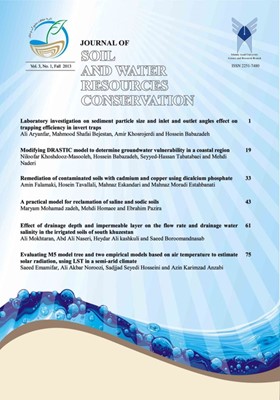-
-
List of Articles
-
Open Access Article
1 - Laboratory investigation on sediment particle size and inlet and outlet angles effect on trapping efficiency in invert traps
Ali Aryanfar Mahmood Shafai Bejestan Amir Khosrojerdi Hossein Babazadeh -
Open Access Article
2 - Modifying DRASTIC model to determine groundwater vulnerability in a coastal region
Niloofar Khoshdooz-Masooleh Hossein Babazadeh Seyyed-Hassan Tabatabaei Mehdi Naderi -
Open Access Article
3 - Remediation of contaminated soils with cadmium and copper using dicalcium phosphate
Amin Falamaki Hosein Tavallali Mahnaz Eskandari Mahnaz Moradi Estahbanati -
Open Access Article
4 - A practical model for reclamation of saline and sodic soils
Maryam Mohamadzadeh Mehdi Homaee Ebrahim Pazira -
Open Access Article
5 - Effect of drainage depth and impermeable layer on the flow rate and drainage water salinity in the irrigated soils of south khuzestan
Ali Mokhtaran Abd Ali Naseri Heydar Ali kashkuli Saeed Boroomandnasab -
Open Access Article
6 - Evaluating M5 model tree and two empirical models based on air temperature to estimate solar radiation, using LST in a semi-arid climate
Saeed Emamifar Ali Akbar Noroozi Sadjjad Seyedi Hosseini Azin Karimzad Anzabi
-
The rights to this website are owned by the Raimag Press Management System.
Copyright © 2021-2025







